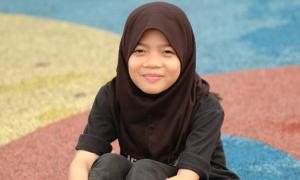article
663 Results
article
Cultural Sensitivity Keeps Students Engaged
A young language arts student teacher directed her class to “close your eyes and imagine what your characters might look like.” I was observing her second-ever presentation to one of the classes where she would practice-teach for the next few weeks. “Details are very important in descriptions,” she continued, “but you can’t write about them if you can’t see them. Maybe you want to write about a beautiful young girl. Think about the details. She’d have big blue eyes and long blond hair, and her hands would be slender and delicate.” As she spoke, I watched her seventh-grade students. They represented the lower-middle-class school’s racial and ethnic mix pretty well: About half of them appeared to be Hispanic, almost a third could be considered African-American and the rest looked Caucasian. I didn’t see a blond hair or a blue eye among them. Most also had round, soft bodies.
article
article
Around the Freedom Table
Black and Jewish youths share a heritage of liberation.
article
Teaching About Ramadan and Eid

Ramadan begins today. Discuss this Muslim holy month with students—and take a step toward countering Islamophobia.
article
Culturally Responsive Curriculum at a Glance
Culturally responsive curriculum is a critical element in reversing poor academic performance in students of color.
article
Diwali in the Classroom: A Parent’s Perspective

Diwali, the Hindu Festival of Lights, is celebrated by more than a billion people all over the world. Here are a few ways you can teach your students about Diwali—and promote multicultural understanding.
article
Seeing Economic Justice for All
In early 1968, Martin Luther King Jr. and other civil rights leaders continued plans for a Poor People’s Campaign. It would take place in the spring in Washington, D.C. The poor and those in solidarity with them would take up temporary residence and march peacefully on the Capitol and advocate for substantial anti-poverty legislation from Congress. They would demand jobs, healthcare and decent housing.
publication
Section II: Classroom Culture
Best Practices for Serving English Language Learners and Their Families
July 5, 2017
text
Multimedia
I Am Tired of Learning New Languages
English language learner, Sing, reads his personal memoir in front of an audience, overcoming his fears and feeling proud of himself.
December 11, 2014
